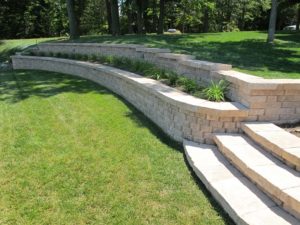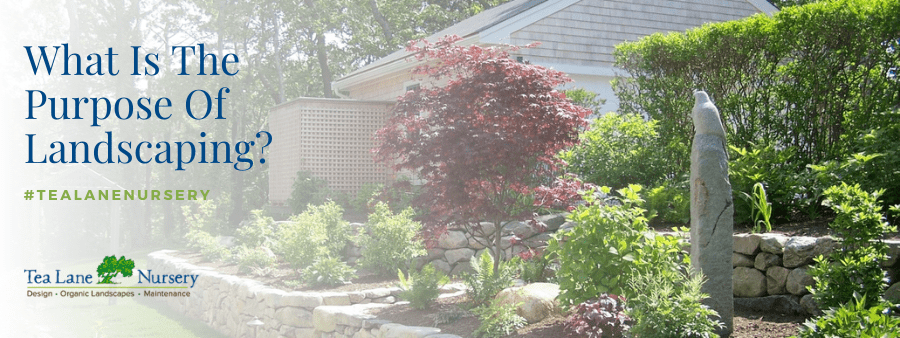The Basic Principles Of Hilton Head Landscapes
The Basic Principles Of Hilton Head Landscapes
Blog Article
How Hilton Head Landscapes can Save You Time, Stress, and Money.
Table of ContentsThe Facts About Hilton Head Landscapes UncoveredThe Buzz on Hilton Head LandscapesIndicators on Hilton Head Landscapes You Need To KnowNot known Details About Hilton Head Landscapes Fascination About Hilton Head LandscapesHilton Head Landscapes - The FactsFascination About Hilton Head Landscapes
Line produces all types and patterns and can be used in a range of means in the landscape. Line in the landscape is developed by the side in between two products, the rundown or shape of a form, or a lengthy linear feature. Lines are a powerful device for the developer since they can be used to produce a boundless range of shapes and kinds, and they control activity of the eye and the body.

Lines can have several characteristics, such as those defined listed below, but they normally serve different purposes. Number 1. Lines in the landscape - landscapers in bluffton sc. The residential or commercial properties of lines establish how people reply to the landscape, both mentally and physically. Straight lines are architectural and forceful; they produce a formal character, are generally associated with a balanced style, and lead the eye straight to a centerpiece.
Facts About Hilton Head Landscapes Revealed
Straight lines are usually located in hardscape edges and material. Curved lines produce an informal, natural, loosened up personality that is associated much more with nature and unbalanced equilibrium. Bent lines relocate the eye at a slower pace and add enigma to the space by producing covert sights. Upright lines relocate the eye up, making a room feel larger.
Upright lines in the landscape include high, narrow plant material, such as trees, or tall frameworks, such as an arbor or a bird residence on a post. Straight lines relocate the eye along the ground airplane and can make an area really feel bigger. Reduced lines are a lot more restrained and produce a sensation of rest or repose.
The Best Strategy To Use For Hilton Head Landscapes
Lines are additionally developed by the upright types of constructed features and plant product. There are 3 primary line kinds that develop type in the landscape: bedlines, hardscape lines, and plant lines.
Bedlines attach plant product to the house and hardscape because the eye adheres to the line, moving the stare with the landscape. Hardscape lines are developed by the side of the hardscape, which delineates the constructed structure. Line can additionally be created by lengthy and slim materials, such as a fence or wall surface.
The 8-Minute Rule for Hilton Head Landscapes
Form is discovered in both hardscape and plants, and it is usually the dominant aesthetic aspect that spatially organizes the landscape and frequently identifies the style of the yard. The kind of frameworks, plant beds, and garden ornaments also figures out the total type theme of the garden. Formal, geometric forms include circles, squares, and polygons.
Plants produce type in the yard through their describes or silhouettes, but form can additionally be specified by a space or adverse room between plants - landscaping hilton head sc (https://h1tnhdlndscps.carrd.co). Circles can be complete circles, or they can be split right into half circles or circle sectors and incorporated with lines to develop arcs and tangents
Hilton Head Landscapes - An Overview
Circles can likewise be extended into ovals and ellipses for even more variety and passion. Circles are a strong layout type due to the fact that the eye is always attracted to the center, which can be utilized to emphasize a centerpiece or connect various other types. Figure 2. Round types in hardscape and lawn panels.
The square form can likewise be segmented and used repetitively to create a grid pattern. Unlike circles, squares are stronger on the edges, which can be lined up or overlapped to produce one-of-a-kind patterns and even more complicated forms.
Meandering lines typically imitate the natural training course of rivers or streams and can be called smooth lines with deeply bent wavinesses. Meandering lines (Number 3) function well for pathways, plant bedlines, and completely dry stream beds. Meandering lines can include interest and mystery to a garden by leading audiences around edges to discover new sights and areas.
Things about Hilton Head Landscapes

Usual plant types are well developed and standard, as type is the most consistent and recognizable characteristic of plants. Kind can additionally be developed with the massing of plants, where the overall mass produces a various form than a specific plant.
A very contrasting form has to be utilized with careone or 2 work well as a centerpiece, but also several wreak havoc. All-natural plant forms, instead than over-trimmed types, ought to develop the bulk of the composition. The relevance of overall form is essentially based on the seeing perspectivethe type of a tree can appear fairly different to an individual standing under the cover versus viewing the tree from a range in an open area.
The Hilton Head Landscapes Statements
Plant kinds likewise create and define the gap or open areas between the plants, producing either convex or scooped kinds in deep spaces. High-arching tree branches usually create a concave open area under the branches, and a rounded cover with reduced branches loads the room to create a convex form in the open space under the tree.

Report this page